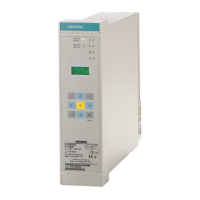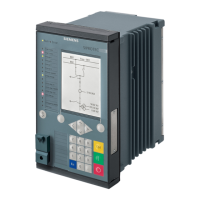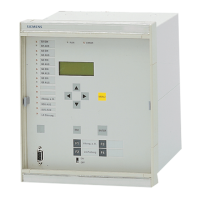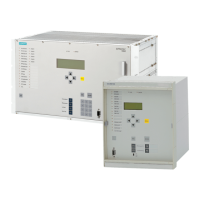Jump of Voltage Vector
Sometimes consumers with their own generating plant feed power directly into a network. The incoming
feeder line is usually the ownership boundary between the network utility and these consumers/producers. A
failure of the input feeder line, for example, due to a three-pole automatic reclosure, can result in a deviation
of the voltage or frequency at the feeding generator which is a function of the overall power balance. When
the incoming feeder line is switched on again after the dead time, asynchronous conditions may prevail that
cause damage to the generator or the gear train between generator and drive.
One way to identify an interruption of the incoming feeder is to monitor the phase angle in the voltage. If the
incoming feeder fails, the abrupt current interruption causes a phase angle jump in the voltage. This jump is
detected by means of a delta process. As soon as a preset threshold is exceeded, an opening command for the
generator or bus-tie coupler circuit-breaker is issued.
This means that the vector jump function is mainly used for network decoupling.
Functional Description
Frequency Behaviour on Load Shedding
The following figure shows the evolution of the frequency when a load is disconnected from a generator.
Opening of the generator circuit breaker causes a phase angle jump that can be observed in the frequency
measurement as a frequency jump. The generator is accelerated in accordance with the power system condi-
tions (see also Section 2.7 Rate-of-frequency-change protection “Rate-of-Frequency-Change Protection”).
[veraenderung-der-frequenz-nach-lastabschaltg-020904-ho, 1, en_GB]
Figure 2-44
Change of the Frequency after Disconnection of a Load (Fault recording with the SIPROTEC 4
device- the figure shows the deviation from the nominal frequency)
Measuring Principle
The voltage vector is calculated from the voltage at the selected input, and the phase angle change is deter-
mined over a delta interval of 2 cycles. The presence of a phase angle jump indicates an abrupt change of
current flow. The basic principle is shown in the following figure. The diagram on the left shows the steady
state, and the diagram on the right the vector change following a load shedding. The vector jump is clearly
visible.
2.8
2.8.1
Functions
2.8 Jump of Voltage Vector
SIPROTEC 4, 7VE61 and 7VE63, Manual 97
C53000-G1176-C163-3, Edition 10.2017
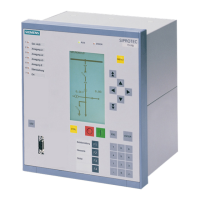
